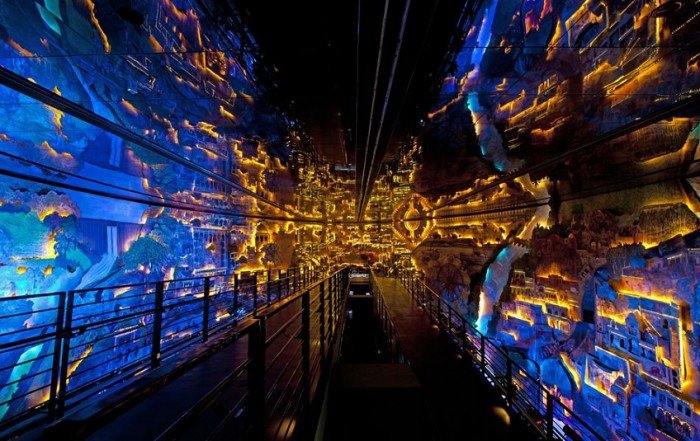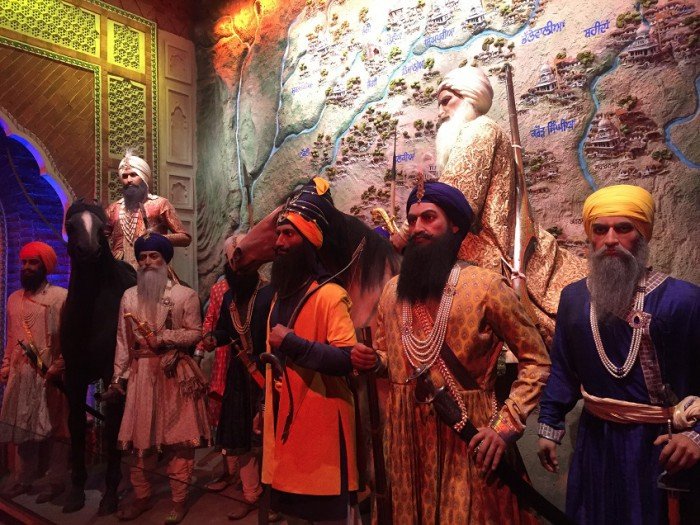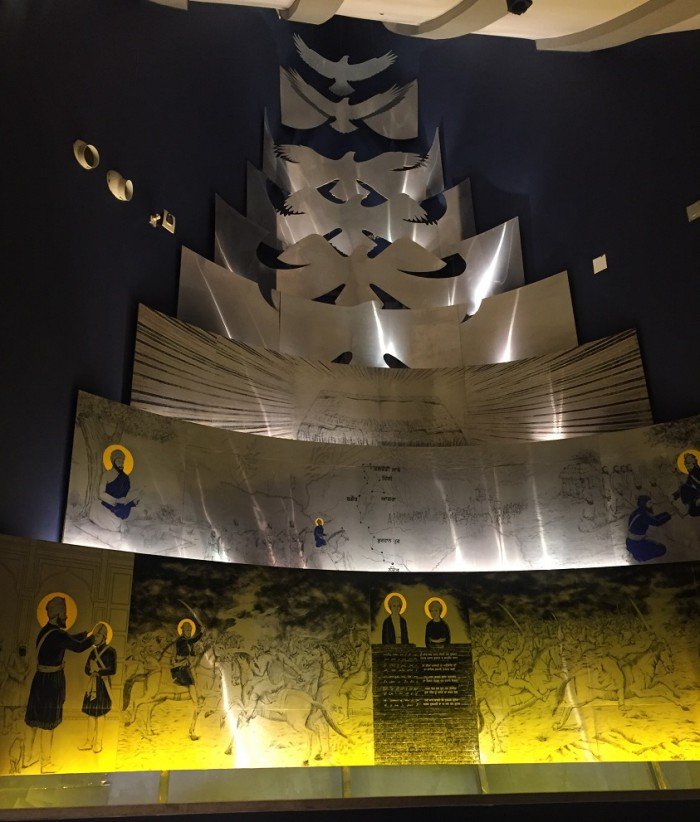Virasat-e-Khalsa depicts Punjab, as it has been over the last 500 years – a scenic landscape overflowing with culture, tradition, blessed by the Sikh Gurus before it faced the atrocity of partition and how it stands today. All of this is presented in form of 27 unique non-linear galleries. Located in Anandpur Sahib, near Chandigarh, the place is easily accessible from all parts of Punjab and can effortlessly be a part of your Sunday family time.
A visual treat for all (Age no bar!)
The place doesn’t even remotely resemble your typical bookish museum. The architecture, the visual arts enhanced by light and sound, capture the heart and attention of every visitor; be it a child accompanied by parents, a college troupe, or retired grandparents.
The Panj-abi elements of architecture:
The video depicts the intricate architecture of this glorious museum.
Video Courtesy: Virasat -e- Khalsa
518 years of heritage unravelled in 27 glorious galleries:
Panj Pani – Boat Building (Gallery 1)
This gallery houses a 360- degree hand-painted mural spread over 3 floors (which once held the record to be the largest hand-painted Mural in the world), created by artist Orijit Sen. The mural depicts the past and the present of Punjab. The elation that one would feel gazing at the mural, which showcases Punjabi festivals, rituals, the primitive phase of Golden Temple is indescribable. All of this is accompanied by a medley of Punjabi folk songs sung by Jasbir Jassi.

The breath-taking 360- degree hand-painted mural spread over 3 floors created by artist Orijit Sen
The Five Petal Building (Gallery 2-9)

These lifelike figures are the centre of attention at the gallery
The building narrates the establishment of Sikhism and the petals trace the lives and contributions of the first Five Gurus, from Guru Nanak Dev Ji to Guru Arjan Dev Ji.
The echo of the Mool Mantar sets a very divine ambiance.
The most iconic gallery in the fifth petal shows the construction of the Golden Temple along with the life of Guru Arjan Dev Ji and his martyrdom.
The Five Crescent Building (Gallery 10- 27)
The petals in the crescent building cover the lives of the last 5 Gurus. The depiction of Guru Tegh Bahadur Ji’s martyrdom gives you goosebumps. The birth of Khalsa is artistically showcased.

The depiction of Guru Gobind Singh Ji’s life and family with the establishment of Khalsa is the highlight of this gallery
In 2016, the museum opened its doors to the public to view the additional galleries.
These galleries depict the journey of the Khalsa and Punjab, from the Maharajas to immediately after Partition and Punjab as we see it today.
The inside guide:
Timings: 10 am to 6 pm
Entry: Free
Open: Tuesday to Sunday
Closed: Monday, National Holidays and during maintenance week.
Audio Kit
An audio kit per person costs Rs 100 and is a must to experience the museum at its best. Available in English, Hindi and Punjabi, it comes with an auto trigger which plays when you walk into any gallery.
For Souvenirs and shopping: There is a gift shop, which has traditional punjabi goods, jewellery and religious texts.
Wheelchair: Available to tour the museum for the convenience of those who need it.
For more information visit http://virasat-e-khalsa.net.
Address: Virasat-e-Khalsa, Shri Anandpur Sahib .
Telephone – 0188 7232592
Picture Courtesy: Virasat-e-khalsa
 About the author
About the author
A PR and Marketing consultant by profession, Akshmin describes herself as a compulsive shopper with an undying love for books, sitcoms, coffee and conversation.
